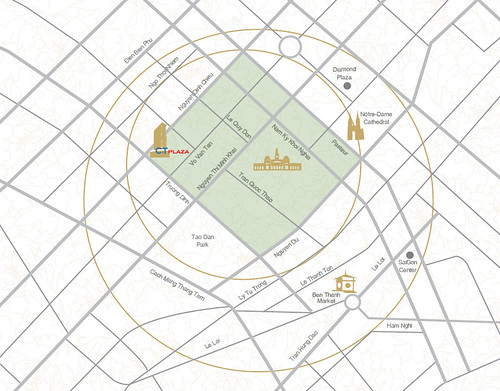Có một bạn hỏi ý kiến tôi về phát biểu mới đây của thống đốc Nguyễn Văn Bình về "định hướng lâu dài lãi suất tiền gửi không thể thực dương". Tìm hiểu thêm về đoạn trả lời phỏng vấn này của thống đốc, tôi phát hiện ra rằng lập luận của ông Bình rất giống quan điểm của Ron Paul trong quyển "End the Fed" phát hành năm 2009. Đại loại là thống đốc Bình phân chia chức năng "giữ hộ tiền", theo ngôn ngữ của Ron Paul là "warehouse", với chức năng đầu tư (risky investment) trong hệ thống tài chính. Nếu ngân hàng chỉ làm chức năng warehouse thì người gửi tiền phải trả phí để được ngân hàng giữ hộ tiền cho mình và điều này tương đương với lãi suất (thực) âm. Hi vọng thống đốc Bình không phải là fan của Ron Paul, nếu không ông sẽ là central banker đầu tiên trên thế giới muốn bãi bỏ institution mà mình lãnh đạo theo lời kêu gọi của một lãnh tụ Tea Party bên Mỹ.
Trước khi phân tích thêm về chức năng warehouse và investment của các ngân hàng, xin được nói lại là lãi suất âm, kể cả lãi suất danh nghĩa chứ không chỉ lãi suất thực, không phải là điều không thể xảy ra. Mấy ngày gần đây một số ngân hàng Thụy sĩ bắt đầu trả
lãi suất danh nghĩa âm, nghĩa là khách hàng phải trả phí để được gửi tiền vào tài khoản của họ. Đây là hệ quả của việc đồng Swiss franc tăng giá quá mạnh nên số lượng tiền gửi vào các ngân hàng Thụy sĩ tăng lên quá nhanh và các ngân hàng không biết phải làm gì với số tiền này. Tình trạng tương tự cũng xảy ra với một
ngân hàng lớn của Mỹ ngay cả khi đồng USD đang bị mất giá trầm trọng. Điều đó có nghĩa là các ngân hàng hiện nay đang dần thiên về chức năng warehouse thay vì chức năng intermediary và lý do của sự chuyển dịch này đơn thuần vì kinh tế thế giới đang có nguy cơ suy thoái trở lại. Ở đây tôi xin nhấn mạnh vào điểm các ngân hàng được quyền tự do quyết định thiên về chức năng warehouse hay intermediary tùy vào tình hình kinh tế và dự báo của họ.
Trong khi đó theo quan điểm của Ron Paul và thống đốc Nguyễn Văn Bình, nhà nước phải tách bạch 2 chức năng này ra 2 nhánh riêng biệt trong hệ thống tài chính để ngăn ngừa rủi ro. Về bản chất đây là ý tưởng chống lại hệ thống fractional reserve banking mà tôi đã có lần
đề cập đến trước đây. Ý tưởng yêu cầu ngân hàng phải có 100% reserve, nghĩa là không được cho vay số tiền mà khách hàng gửi vào mà chỉ được cho vay bằng số vốn tự có của mình, đã xuất hiện trong giới kinh tế trước Ron Paul khá lâu (trường phái full reserve banking). Những người ủng hộ gold standard (như Ron Paul) thường không phân biệt rõ fiat money và fractional reserve banking, đánh đồng 2 khái niệm này với nhau và cho rằng đây là "ý chí" của nhà nước mặc dù trên thực tế cả fiat money và fractional reserve banking đều là phát kiến của thị trường để giải quyết nhu cầu medium of exchange ngày càng tăng. Một số conspiracy theorists thậm chí đi xa hơn cho rằng hệ thống fiat money và central banking là kết quả của sự thao túng nhà nước của một/vài gia tộc tài chính lớn như Rothschild hay Morgan. Rồi thậm chí cả IMF/WB cũng là những cánh tay nối dài của các banking dynasty này.
Một điểm thú vị là trong khi Tea Party là một phong trào cực hữu còn những conspiracy theorists thường là cực tả, cả hai cực này có một điểm chung là muốn chấm dứt central banking. Phía cực hữu cho rằng central bank là phương tiện để government ngăn chặn personal liberty và bành trướng (big government), phe cực tả lo ngại central bank chỉ phục vụ cho một thiểu số bankers giầu có thông qua bóc lột đa số dân nghèo ở cả các nước phát triển và các nước đang phát triển (thực ra Ron Paul cũng nhắc đến ý này). Ở đây tôi không bàn về những ý tưởng của phe cực tả, tôi sẽ phân tích thêm về những lập luận của Ron Paul và phong trào Tea Party để thấy những điều thiếu logic trong ý tưởng "End the Fed" của chính trị gia này.
Trong "End the Fed", Ron Paul dành hẳn một chương nói về quá trình hình thành tư tưởng "chống Fed" của mình. Nếu Nguyễn Ái Quốc tìm được chân lý sau khi đọc "Luận cương về vấn đề dân tộc và thuộc địa" của Lenin thì Ron Paul đã được "khai sáng" sau khi đọc "The road to serfdom" của Hayek. Có lẽ ý tưởng "End the Fed" đã được hình thành trong giai đoạn 1960s khi Ron Paul bắt đầu đọc sách vở của các tác giả trường phái Áo như Mises, Hayek, Rothbard. Đây là giai đoạn các tác giả trường phái này dịch chuyển từ ủng hộ gold stardard sang free banking, nghĩa là một hệ thống không có central bank và national currency mà các ngân hàng tự phát hành tiền của mình và cạnh tranh với nhau. Mặc dù có đọc Ayn Rand, nhưng không như nhiều libertarian khác Ron Paul viết trong End the Fed rằng tác giả này không phải là nguồn gốc lý tưởng libertarian của mình. Theo
wikipedia, Ron Paul thậm chí còn không đăng ký vào quĩ hưu trí của QH Mỹ vì cho rằng đây là một hình thức big government. Có thể thấy "End the Fed" chỉ là phương tiện còn mục tiêu cuối cùng của chính trị gia này là "end the (big) government".
Một trong những mục tiêu của phe libertarian/rightist là giảm thiểu hoặc thậm chí xoa bỏ government regulation. Những ví dụ điển hình là kêu gọi legalize ma túy hay chống lại việc cấm sở hữu súng. Trào lưu deregulation từ thời Thatcher/Reagan cũng có nguồn gốc từ libertarianism/conservatism với lập luận rằng phải giảm thiểu những qui định và quản lý lên giới doanh nghiệp nói chung và giới ngân hàng nói riêng để thị trường tự tìm ra equilibrium. Đỉnh điểm của trào lưu deregulation này trong giới banking là việc xóa bỏ một phần luật Glass-Steagall từ năm 1933 buộc commercial banking phải tách khỏi investment bank. Với quan điểm phải bắt giới ngân hàng tách hoạt động warehouse khỏi investment, Ron Paul (và Nguyễn Văn Bình) dường như muốn quay lại quản lý các ngân hàng thương mại chặt hơn, ngược hoàn toàn với tư tưởng tự do và deregulation mà giới libertarian vẫn cổ vũ.
Không chỉ ngăn cản tự do của giới ngân hàng được quyền chọn chức năng warehouse hay investment, việc bắt buộc tách 2 chức năng này còn vi phạm tự do của người dân khi họ muốn có một hình thức đầu tư đơn giản và tương đối an toàn. Thống đốc Nguyễn Văn Bình nói nếu bạn muốn có lợi nhuận thì phải đem tiền đầu tư vào thị trường chứng khoán, còn nếu gửi ở ngân hàng thì phải trả phí cho dịch vụ "giữ hộ" tiền đó. Như vậy nếu bạn không có hiểu biết gì về đầu tư và/hoặc không muốn mạo hiểm với thị trường chứng khoán thì chỉ còn một cách là giấu tiền dưới gậm giường của mình để khỏi phải mất tiền cho ngân hàng giữ hộ. Tôi ngờ rằng quan điểm ban đầu của Ron Paul không phải là chống lại fractional reserve banking mà chỉ đơn giản là muốn hủy bỏ fiat money để quay về gold standard. Tuy nhiên để đạt được mục tiêu này (bỏ fiat money) thì phải xóa bỏ central bank là cơ quan phát hành và quản lý fiat money, và để bỏ được central bank thì phải bỏ fractional reserve banking. Có điều đòi loại bỏ fractional reserve banking thì trái ngược với lập luận cổ súy free banking của trường phái Áo là gốc rễ tư tưởng của Ron Paul.
Ron Paul cũng dành hẳn một chương để cố liên hệ giữa central bank/fiat money với chiến tranh. Lập luận cơ bản là nếu không có fiat money thì nhà nước không thể tự tiện khai chiến vì không có nguồn lực. Không bàn về tính đúng đắn của lập luận này (lịch sử chiến tranh đã có hàng ngàn năm trước khi fiat money/central bank ra đời), logic của lập luận này là nhà nước có thể huy động được nguồn lực thông qua phát hành fiat money. Điều này trái ngược với hầu hết các lập luận khác của Ron Paul và giới conservative là central bank và fiat money không tạo ra được của cải mà chỉ làm đồng tiền mất giá. Lập luận này đúng với những central bank như ở Zimbabwe cách đây 3 năm hay VN cách đây 30 năm, những central banks này không thể huy động được thêm nguồn lực và sẽ làm suy yếu nền kinh tế vì in tiền vô tội vạ. Nhưng những quốc gia như vậy không thể huy động nguồn lực để phát động chiến tranh từ việc in tiền. Ngược lại ví dụ của Ron Paul về những quốc gia tham gia Thế chiến thứ Nhất đều là những nước có bản vị vàng, họ huy động nguồn lực không phải từ in tiền mà từ khả năng vay nợ quốc gia. Và ở thời điểm đó tham chiến (với hi vọng sẽ chiến thắng) là một biện pháp để trả nợ. Giải tán Fed và quay về bản vị vàng để hạn chế chiến tranh có lẽ là ý tưởng "lãng mạn' nhất của ông nghị này.
Như tôi đã chỉ ra bên trên, thực ra "end the Fed" chỉ là phương tiện cho mục tiêu "end the (big) government". Nhưng đằng sau mục tiêu này là gì? Ron Paul chỉ ra một lý do duy nhất là vấn đề đạo đức (nhưng lại viết trong một chương về philosophy). Đối với libertarian/conservative, việc redistribution of wealth là một điều "vô đạo đức" và Ron Paul cho răng với fiat money wealth redistribution sẽ diễn ra thông qua inflation. Hầu hết các tiếng nói phản đối big government đều vì vấn đề redistribution này, những lập luận kiểu như "big government = big corruption" hay "big governments = communism" thực ra chỉ là noise. Điểm quan trọng nhất với phe chính trị này là chống lại redistribution, nghĩa là không ai được tước đoạt những gì do tôi làm ra hay là property của tôi. Không bàn về phạm trù đạo đức, riêng về mối liên hệ giữa fiat money/central bank/inflation với redistribution mà Ron Paul đã có vấn đề. Nếu bỏ qua những lập luận của giới conspiracy theory về khả năng central bank phục vụ cho một vài dynasty, việc TARP (gói giải cứu các banks trong giai đoạn khủng hoảng năm 2008) cuối cùng có lời cho thấy thực chất giới ngân hàng đã transfer wealth ngược lại cho tax payers của Mỹ hoặc ít nhất đây là win-win solution cho nền kinh tế Mỹ.
Còn nếu coi inflation là một dạng wealth redistribution thì phải tính đến nominal income growth mới công bằng. Trong khi Ron Paul và những người ủng hộ gold standard chỉ ra rằng đồng USD đã mất giá hơn 90% kể từ đầu thế kỷ 20 đến nay, không ai nói một lời nào về purchasing power nếu tính theo norminal income đã tăng lênh nhanh hơn rất nhiều (NGDP của Mỹ tăng khoảng 130 lần trong thời gian đó). Nếu có redistribution effect vì inflation thì chắc chắn hiệu ứng này nhỏ hơn nhiều so với tăng trưởng kinh tế, hay nói cách khác cái bánh mà xã hội chia nhau đã lớn hơn rất nhiều khả năng inflation có thể chuyển một phần bánh từ người này sang người khác. Tôi không muốn đi sâu hơn về tác động của banking and finance vào tăng trưởng kinh tế, có một mảng nghiên cứu rất lớn trong kinh tế học về vấn đề này với những tên tuổi như Stiglitz, Krueger, Romer, Sachs, de Soto... Một trong những kết luật quan trọng của giới development economics là repressed financial system kìm hãm tăng trưởng và làm tăng khoảng cách giầu nghèo. Bởi vậy nếu đã nhắc đến phạm trù đạo đức thì cần phải nói thêm liệu xóa bỏ redistribution (cứ giả sử như vậy là đạo đức) thì có giúp gì cho tăng trưởng kinh tế hay không?
Nhìn chung "End the Fed" là một quyển sách không tệ cho general public, nhưng xét về mặt học thuật thì còn nhiều điểm phải bàn. Ron Paul chắc chắn có trí tuệ hơn nhiều Tea Party leader khác và xứng đáng hơn Perry/Bachmann/Palin đại diện cho phong trào này trong cuộc chạy đua nomination của đảng Cộng hòa sắp tới. Tuy nhiên đảng Cộng hòa sẽ phải cân nhắc rất kỹ khi đưa một ứng viên quá thiên hữu ra tranh cử. Xét cho cùng viết một quyển sách kêu gọi "end the Fed" cùng lắm chỉ gây ra tranh cãi, một ứng cử viên với cương lĩnh tranh cử radical như vậy sẽ dễ mất phiếu và mất cả contribution money từ giới finance.





















 Under the plan, families would contribute 1% of their income in order to be provided with loans to buy houses.
Under the plan, families would contribute 1% of their income in order to be provided with loans to buy houses.












 After three years’ construction, the Nikko Saigon has been built in a large, newly developed commercial complex, Royal Centre Project, on Nguyen Van Cu Street in Ho Chi Minh City’s District 1.
After three years’ construction, the Nikko Saigon has been built in a large, newly developed commercial complex, Royal Centre Project, on Nguyen Van Cu Street in Ho Chi Minh City’s District 1.



